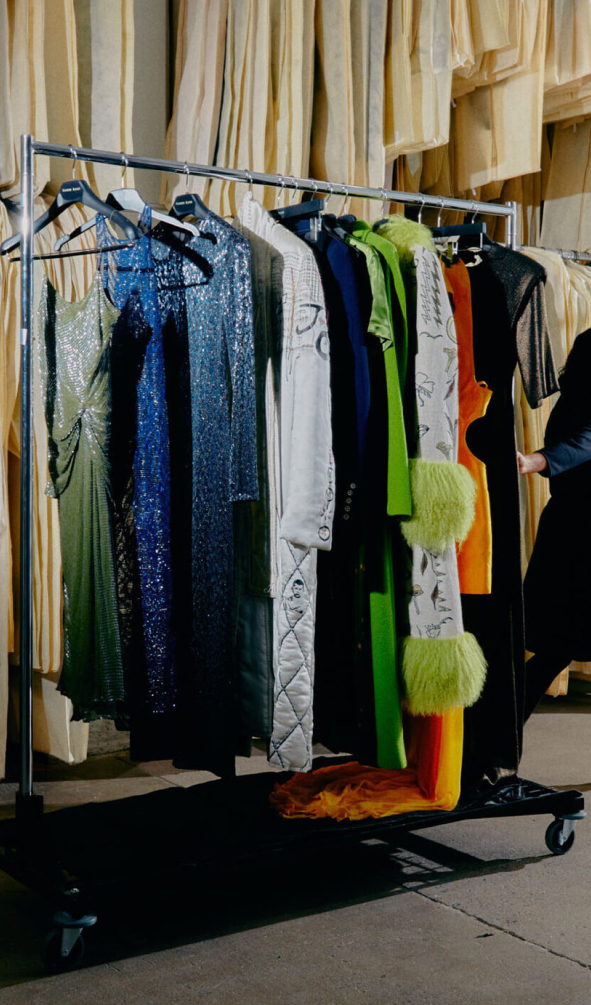
Statista says that revenue in the fashion market is projected to reach $880.91 billion in 2025, and it’s expected to show an annual growth rate of 7.64%. Needless to say, fashion is here to stay, and it’s a worthwhile investment, especially if you’re already active in the scene.
This industry isn’t just about current trends though. Archival fashion is very real, especially when designers release rare, limited-edition pieces that everyone wants to get their hands on.
If you’re lucky enough to own some of these pieces, then you’ll want to keep them in pristine condition. This article will show you the key dos and don’ts of archival fashion storage.
Do Store Items in a Climate-Controlled Environment
You should absolutely store items in a climate-controlled environment, as temperature and humidity are critical to fabric preservation.
Ideally, it should be between 65-70°F and 45-55% relative humidity. Fluctuations can cause:
- Mold growth
- Fiber deterioration
- Brittleness
Avoid storing your garments in attics or basements where these fluctuations may occur.
Don’t Use Wire or Plastic Hangers
Archival fashion maintenance dictates that wire and plastic hangers are huge red flags. They can distort shoulders or leave rust/residue stains over time.
Instead, you should use padded hangers for structured garments, such as jackets and dresses. Don’t use hangers with colors that could transfer onto your garments. Otherwise, delicate pieces should be folded and stored flat, using acid-free tissue paper.
Do Use Acid-Free Materials
There’s more to acid-free materials than tissue paper. Archival boxes and garment bags should also be acid-free, as well as lignin-free. This will prevent chemical interactions with fabric.
You should line the folds and creases with acid-free tissue to minimize fiber stress when storing antique textiles. Plus, use unbuffered acid-free tissue if you’re working with animal-based materials.
Don’t Store Items in Plastic Garment Bags
One key thing regarding properly storing clothes for long-term preservation is not using plastic garment bags. Since it’s not breathable, it traps moisture, and this can result in mold, yellowing, and fiber degradation.
Cotton muslin garment bags are very breathable, so use these instead as fashion storage solutions. You should also stay away from dry-cleaner plastic covers or vacuum-sealed storage solutions.
Do Clean Garments Before Archiving
Your garments may look like they’re clean already, but there are tiny things that the eye can’t see, and they can degrade materials over time. With proper cleaning, you can remove:
- Oils
- Dirts
- Residues that attract pests
Choose from either museum-standard dry cleaning or wet cleaning methods. Whatever you pick, let the garments dry completely before you store them away.
Don’t Expose Pieces to Direct Light
UV light is detrimental to fabrics, as it causes fading and fiber damage. Because of this, you should store your pieces in dark or dimly lit areas.
Are you planning on displaying them? Then use UV-filtering glass or acrylic. You should also rotate pieces regularly to minimize UV damage.
Do Handle With Clean, Bare Hands or Gloves
You might be sure that your hands are clean, but there are microscopic details you may not detect, such as oils or residue. You should always clean your hands thoroughly before handling your pieces; even better is if you use white cotton gloves. This reduces the risk of oil and residue transfer.
In addition, you should remove your jewelry and watches to avoid snags. And when handling fragile garments, always support them with both hands.
Don’t Overcrowd Racks or Boxes
You may be tempted to save space by cramming as much as you can onto racks or into boxes. However, crushing or compressing your garments can cause the following:
- Distortion
- Wrinkling
- Long-term damage
Allow for ample space between hung pieces and limit how many garments you fold into a box. It’s always better to err on the side of caution.
Do Label and Document Each Piece
Some extra steps now can save you trouble in the future. With proper documentation, it’ll preserve provenance and aid in evaluations.
You should record the:
- Designer
- Date
- Materials
- Condition
- Acquisition source
If possible, include photographs, tags, and exhibition history too. Make sure to use archival ink on acid-free tags or labels.
Don’t Rely on Mothballs or Scented Sachets
You may have good intentions, but mothballs or scented sachets can chemically react with the textiles. As a result, they may leave harmful residues.
An excellent alternative is natural pest deterrents, such as lavender or cedar. However, you should use them sparingly and ensure they don’t touch the garments directly.
Regularly check the items for pest activity so you can take quick action if needed.
Do Rotate and Inspect Your Collection Regularly
Not only do routine inspections allow for early detection of pests, but also mold or material breakdown. We recommend inspecting every 3-6 months.
Refold the garments differently each time to avoid permanent creasing.
Don’t Modify or Repair Without Conservation Expertise
Amateur repairs can reduce a piece’s value or even cause irreparable harm. So don’t do the following unless guided by a professional textile conservator:
- Ironing
- Steaming
- Sewing
If necessary, document any modifications thoroughly.
Do Consider the Original Design Intent
People mistakenly think that preservation is only about the physical condition of garments. In reality, it’s about historical integrity too.
To preserve the original design intent, you should:
- Maintain original closures, trims, and finishes
- Avoid re-dying or altering to “fresh” appearances
- Replicate original drapes and structures when displaying pieces
Don’t Mix Materials That Can Cross-Contaminate
Some fabrics or embellishments may bleed dye or off-gas chemicals that are harmful to others. So you should separate materials like:
- Leather
- Metal trims
- Rubber-based items
In addition, accessories (like belts and jewelry) should be stored in separate acid-free containers.
Invest in Archival Fashion Wisely
Archival fashion is a hot topic, and it’s never too late to join in. Collecting the historical pieces is fun, but storing them correctly is of the utmost importance. If you don’t follow the right steps, then your garments may deteriorate and become devalued.
So do your due diligence today and preserve your pieces as best as possible. It’ll be worth it when they’re still in amazing shape years later.
Would you like assistance with archival garment preservation? Then contact us today. UOVO has advanced inventory technology and custom-built storage facilities.




